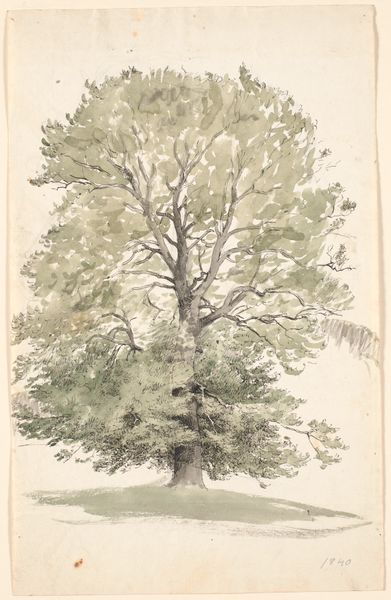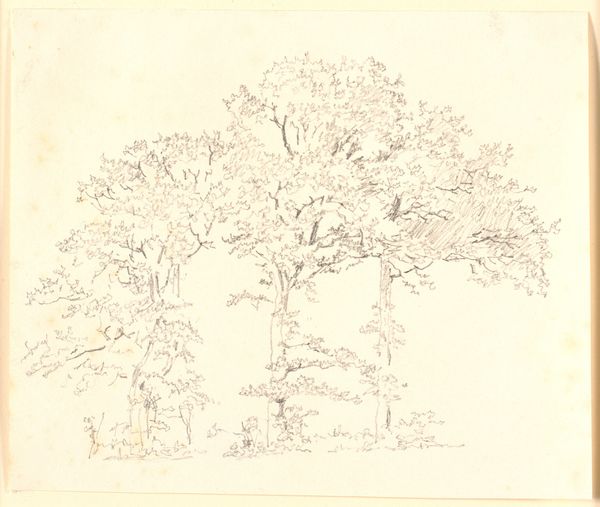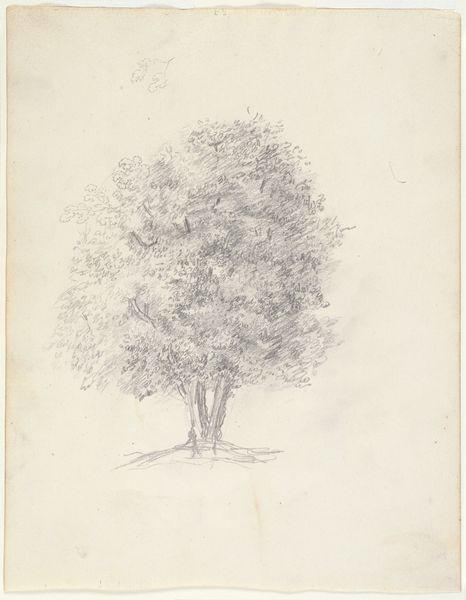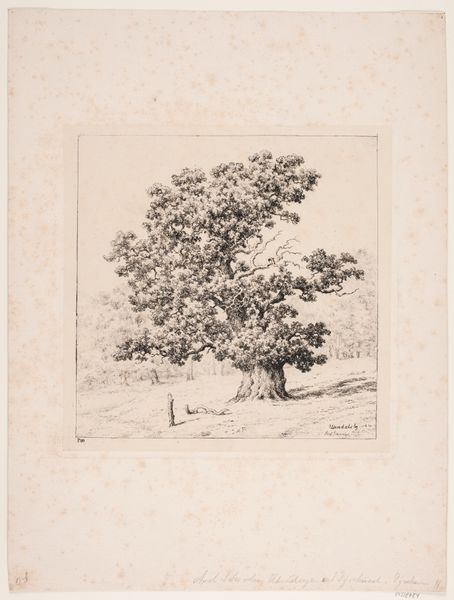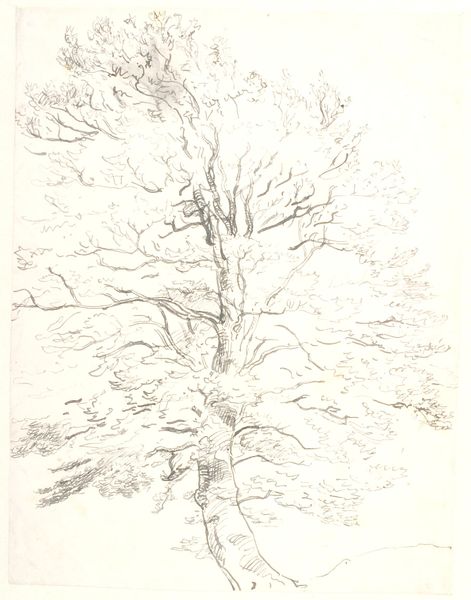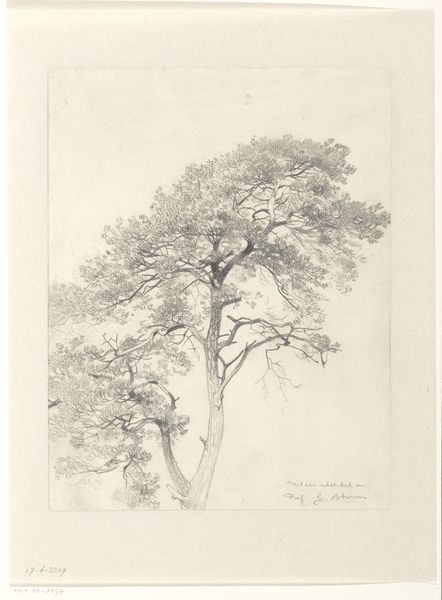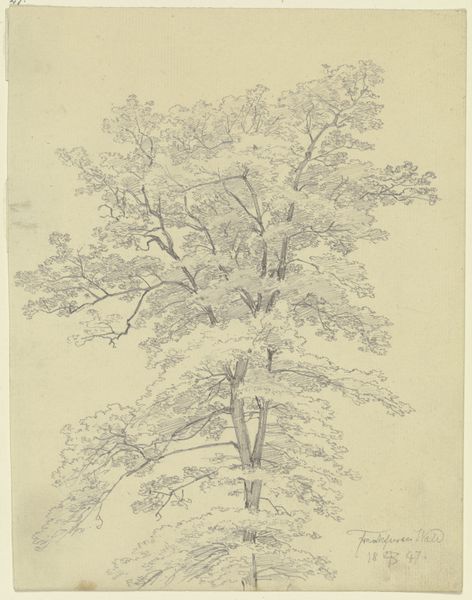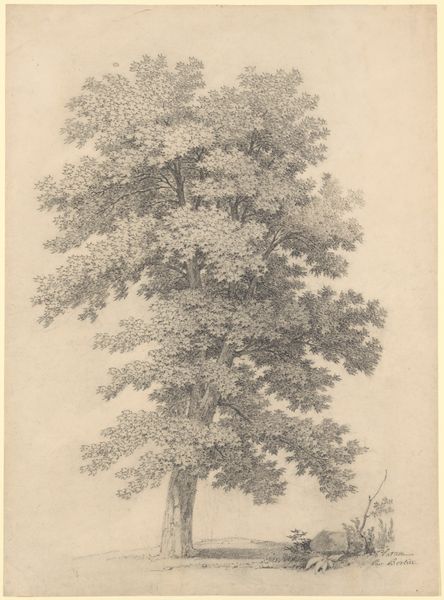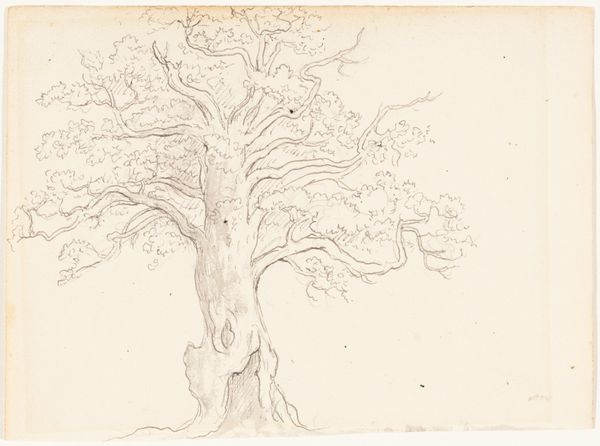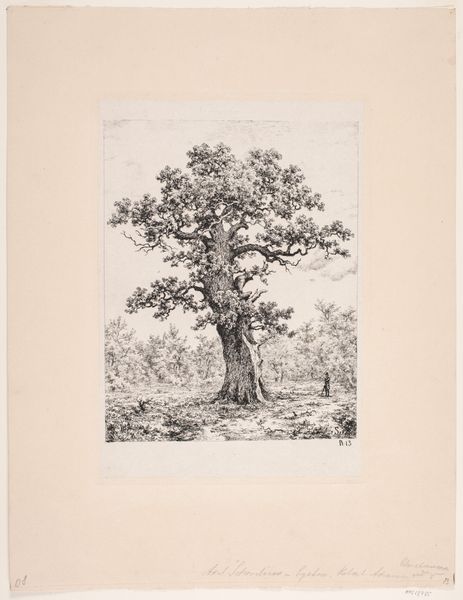
drawing, print, ink
#
drawing
#
ink drawing
# print
#
landscape
#
etching
#
ink
#
line
#
realism
Dimensions: 346 mm (height) x 216 mm (width) (bladmaal)
Curator: Standing before us is P.C. Skovgaard's "Træ ved Fredensborg," created in 1840. This drawing, rendered in ink, presents a solitary tree at Fredensborg. Editor: There’s something immediately soothing about this piece, isn't there? The linework, though simple, really captures the almost drowsy, silent grandeur of a single tree. Like a visual sigh. Curator: Skovgaard was deeply invested in portraying the Danish landscape. During this time, national identity was being actively constructed, and artists like him played a crucial role in shaping the visual representation of Denmark. How does this contribute to your "visual sigh"? Editor: The "sigh" comes from its quiet confidence, it’s deeply rooted...pun intended! I get the feeling he knew this tree personally. Also the way Skovgaard uses a somewhat rudimentary material—pen and ink—to illustrate this image makes it somehow very personal and approachable. Curator: I think that feeling of intimacy is enhanced by the work's context. Fredensborg Palace was and still is a significant site of royal activity and national symbolism. By depicting the natural surroundings, rather than the palace itself, Skovgaard perhaps comments on nature's own "authority", juxtaposed against human construction of political systems. Editor: Yes, he shows the deeper roots beyond human constructed stories. And you are absolutely right. By emphasizing the lone tree against the backdrop of a seat of power, it sort of whispers, "I was here long before." And maybe it’s something about this slightly unpretentious simplicity, its not particularly trying to make any big artistic claim. That feels almost radical now, doesn’t it? Curator: In many ways, the art of this era laid the foundations for a national visual culture that, while appearing "natural," was in fact carefully constructed and maintained by institutions and individuals. Editor: Thinking about it, what’s more quietly revolutionary than observing something honestly and carefully? Thanks for pointing out what Skovgaard’s tree represents. I think now my initial “sigh” goes a little bit deeper.
Comments
No comments
Be the first to comment and join the conversation on the ultimate creative platform.
